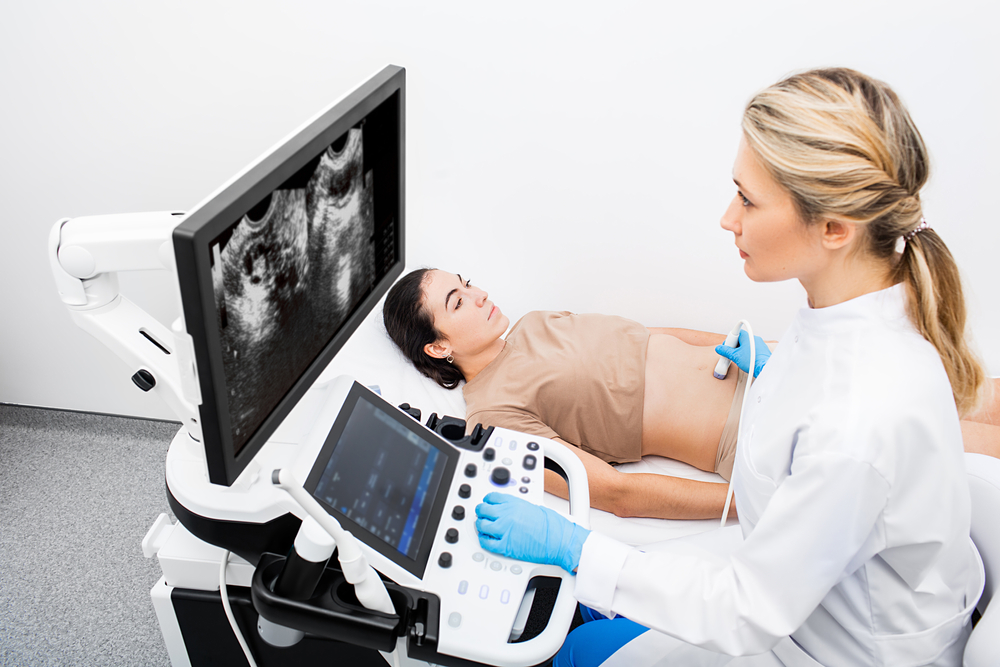It is important to optimise the pre-conception health of women, as women with PCOS are more likely to have a higher risk of pregnancy complications.
Contrary to widespread belief, polycystic ovary syndrome (PCOS) is not always a primary disorder of the ovaries and altered ovarian appearance is not required for diagnosis of PCOS (here).
Rather, it is a complex hormonal condition with a large spectrum of features.
Often, but not always, patients diagnosed with this syndrome suffer from excessive hair growth, acne, and struggle with obesity (here).
The “cysts” are not cysts but rather follicles containing eggs. The polycystic label was given when the condition was first described and it has stuck, causing much worry and requests from patients to remove the “cysts” (here). The condition affects about one in ten women.
In this article, I will look at a couple of patient myths about this condition.

Patient myth: “I can’t get pregnant because I have PCOS”
Due to incorrect signalling from the hormone-making area of the brain — the hypothalamic pituitary axis — the impulses required to produce ovulation may be deficient (here). Typically, patients have irregular menstrual cycles, occurring more than every 35 days (here). Sometimes women with PCOS don’t have periods at all (here).
Periods occur for two main reasons.
- An ovulation has occurred, progesterone is produced from the ovulation site to prepare the lining of the uterus for pregnancy but no pregnancy results, so this lining is shed as a period.
- No ovulation occurs and oestrogen is still produced, which grows the lining of the uterus but because there is no normal ovulation, it eventually becomes unstable and sheds as a period.
People with irregular periods or no periods are usually not ovulating, but they can have an occasional ovulation and fall pregnant. It is impossible to know if this random ovulation may occur, so contraception is important for people who do not want to fall pregnant (here).
For people who want to fall pregnant, a fertility specialist can assist with ovulation medication.
Patient myth: “I have polycystic ovaries on ultrasound, so I must have PCOS”
One in four people have polycystic ovaries on ultrasound, that means they have lots of follicles containing eggs, not lots of cysts and they don’t necessarily have PCOS (here).
As ultrasound has become more detailed, the diagnostic criteria have shifted from the presence of 12 follicles to 20 follicles (here). Younger people have higher egg numbers, so it is now recommended not to use ultrasound for the diagnosis of PCOS in the adolescent years (here, here and here).The presence of excessive hair growth, acne or elevated male hormones may also be present as well as irregular periods, bearing in mind that some cycle irregularity when periods first start is normal for adolescents as their reproductive system matures (here).
Since PCOS only occurs in one in ten people, for an adult to be given a diagnosis of PCOS, they must have two out of three of the following symptoms (here):
- irregular cycles of more than 35 days;
- excessive hair growth, acne, or elevated male hormones; and/or
- more than 20 follicles in at least one ovary or a high range anti-Müllerian hormone (AMH) level.
Considerations after diagnosis
Patient education is important, as this is now recognised as a lifelong condition that can even be diagnosed for the first time post-menopause after excluding other reasons for elevated androgens (here).
A good resource is the Ask PCOS mobile application, which was written by the group that wrote the international guidelines on PCOS (here). For each symptom, there is a potential solution. Patients should prioritise optimising their health with a healthy diet and exercise. No specific diet or exercise program is recommended above following recommended guidelines.
Diabetes should be excluded on diagnosis (here) as well as elevated cholesterol and high blood pressure, as these are more common in PCOS. There are effective treatments for acne and excessive hair growth, such as the oral contraceptive pill and laser hair removal (here).
Endometrial protection from long-standing high unopposed oestrogen which can cause endometrial hyperplasia is important by inducing a period every three months with progesterone, a progesterone-coated intra-uterine device or an oral contraceptive pill.
It is important to understand that depression, anxiety and body image problems are now recognised to be more common with this condition (here), so psychological support may be needed.
If a patient is planning a pregnancy, it is essential to optimise their pre-conception health, as people with PCOS are recognised to be at higher risk of pregnancy complications. It is recommended that patients with PCOS have an oral glucose tolerance test before trying to conceive (here).
If periods are irregular and patients are desiring fertility, then referral to a fertility specialist for assistance can be considered.
Dr Fleur Cattrall is a Melbourne in vitro fertilisation (IVF) specialist and Medical Director of Melbourne IVF.
The statements or opinions expressed in this article reflect the views of the authors and do not necessarily represent the official policy of the AMA, the MJA or InSight+ unless so stated.
Subscribe to the free InSight+ weekly newsletter here. It is available to all readers, not just registered medical practitioners.
If you would like to submit an article for consideration, send a Word version to mjainsight-editor@ampco.com.au.

 more_vert
more_vert